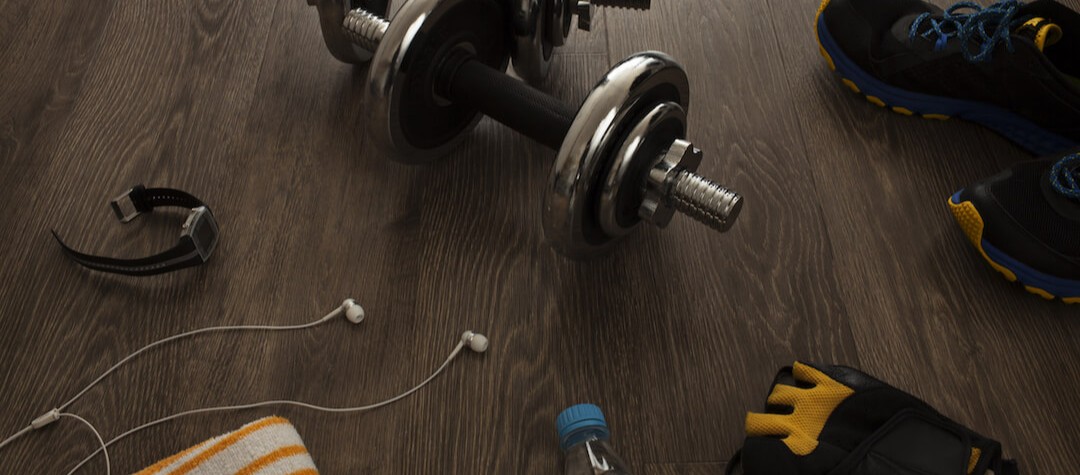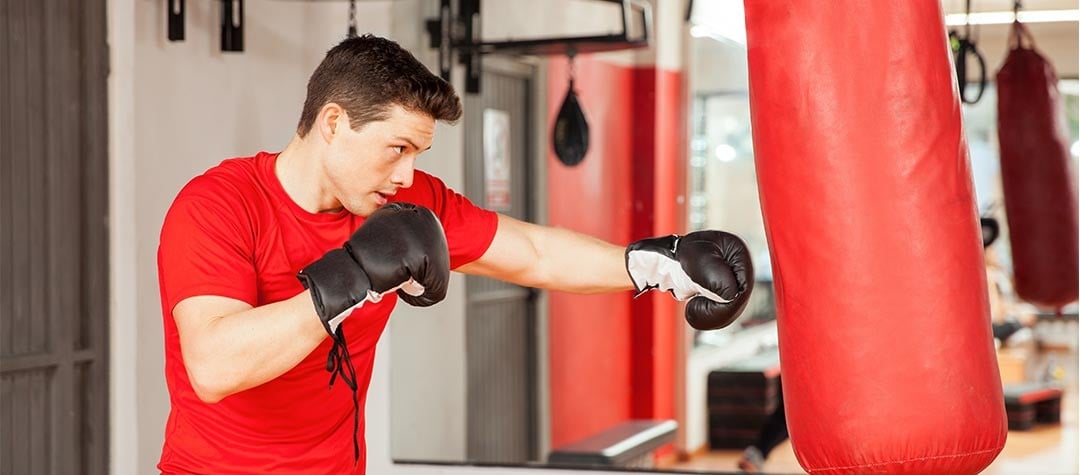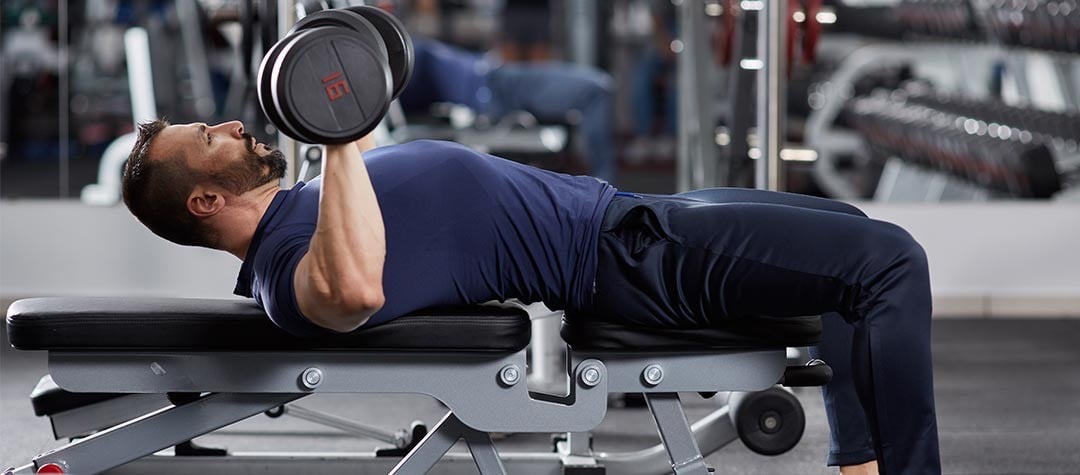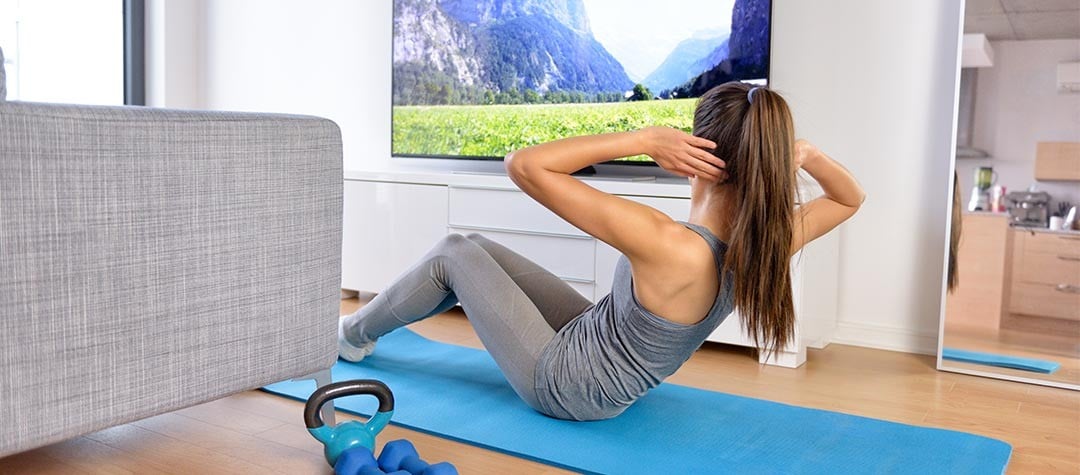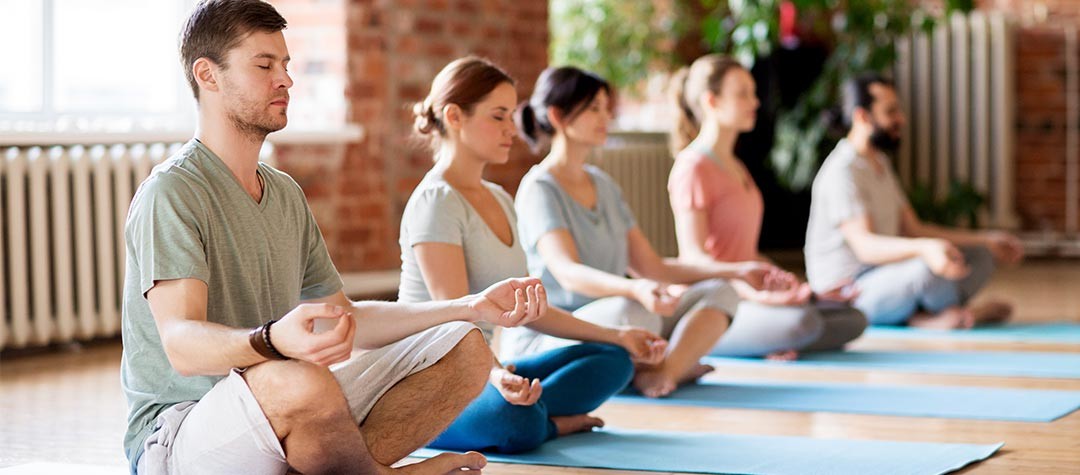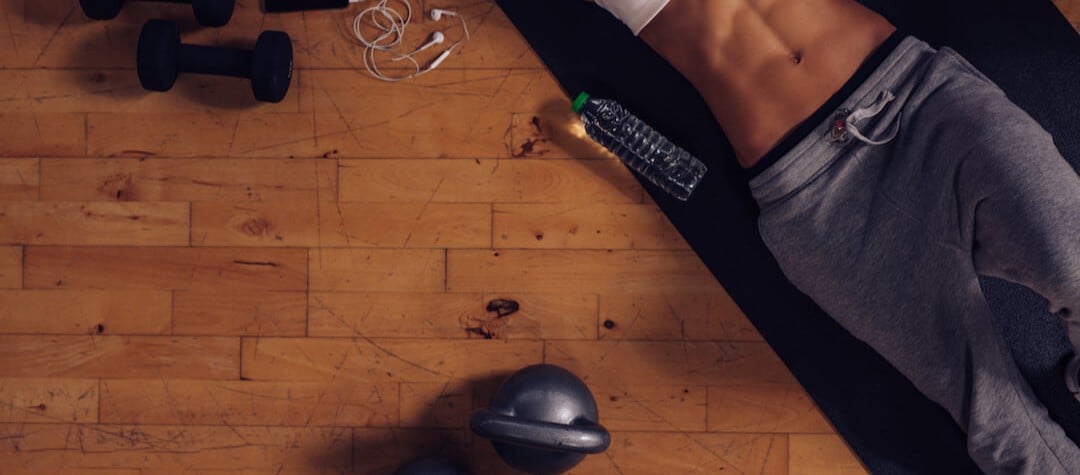So, you want to get started in fitness? It’s never too late to get into shape. Whether you're looking to improve your stamina, strength or suppleness our beginner guide will show you how to do it enjoyably and effectively…
The main components of fitness are the three ‘S’s: stamina, strength and suppleness. Each attribute brings different body and health benefits, and requires a different type of exercise to achieve.
1. Ways to improve your stamina
To improve stamina (your ability to ‘keep going’), you need to do aerobic or ‘cardiovascular’ exercise. Cardiovascular exercise is the type that really helps your heart — studies show that even 30 minutes walking a day can lower bad cholesterol (LDL) levels and reduce blood pressure — and its high energy demand helps you shed excess pounds too.
This kind of training generally uses the large muscles of the body, such as legs, back and chest, and is of a reasonably prolonged nature (in other words, 20 minutes, rather than a few minutes). It should be intense enough to make you warm, sweaty and a little breathless but not so intense that you can’t sustain it for any length of time.
If you are able to maintain a conversation (albeit a slightly breathless one!) you’ve got the intensity right. To begin with, duration rather than intensity matters. The tougher stuff comes later on!
2. Ways to increase your strength
Strength training , as the name suggests, is all about improving the strength of your muscles. But even if you aren’t interested in building up your biceps or streamlining your thighs, this type of exercise is important because it strengthens the ‘connective’ tissues, such as ligaments and tendons, and helps to preserve bone density, so you are more pain and injury-resilient.
Research shows that a higher muscle mass helps to preserve your metabolic rate as you get older.
There are also benefits that are nothing to do with the muscles and joints. Research shows that a higher muscle mass helps to preserve your metabolic rate as you get older (when normally, it would be falling). Strength training also enhances the body’s glucose uptake, lowering the risk of diabetes, and can help you maintain a healthy blood pressure.
Strength training (or ‘resistance training’) is traditionally done in a gym using weights but that’s certainly not the only way to do it! As long as the muscles have to ‘resist’ an external force that is higher than what they are used to, they will get stronger. Whether that force is a dumbbell, elastic resistance tube or even gravity, is unimportant, as far as your muscles are concerned. There are many exercises you can do yourself, without equipment at home.
3. Ways to increase your suppleness
Finally, let’s look at flexibility. People usually think suppleness means being able to wrap your legs around your neck, or at least touch your toes, but really, it’s just about being able to move your joints and muscles through their full range of motion. As we age, our flexibility declines rapidly as collagen fibres within the muscles stiffen.
It’s vital that we stretch and mobilise regularly, to ensure that we don’t end up stiff and immobile, with short, tight muscles. Good flexibility is an asset both in daily life (reaching that top shelf) and sport (stretching out to return a tennis ball over the net) and being supple helps you maintain good posture, as well as minimising your risk of getting injured during activity.
Fitness experts recommend that we include all three types of training in our weekly regime. The table below offers guidelines on how much we should be doing of each type. But don’t worry if it’s beginning to sound as if getting fit is destined to take up half your waking hours, there are many ways you can fit in exercise to improve your stamina, strength and suppleness.
| MODE | FREQUENCY | INTENSITY | TIME |
| AEROBIC EXERCISE | 3-5 workouts per week | 55-90% maximum heart rate (the maximum number of times your heart can beat per minute) |
20-60 minutes continuous or intermittent effort. |
| STRENGTH TRAINING | 2-3 days per week | Dependent on desired outcome | Sufficient to work all the major muscle groups. |
| FLEXIBILITY TRAINING | 2-3 days per week | Stretch to the point of mild discomfort, not pain | 15-30 seconds per stretch for flexibility maintenance. Longer for remedial stretching. |
You may not think that merely putting a bit more effort into your daily activities would have much impact on your overall fitness, but think again. By combining daily 'lifestyle activity' with more structured workouts can lead to considerable fitness benefits.
Now we have an idea of what fitness is all about, how are we going to make it happen? Devoting time to structured workouts (whether they be to build strength, improve aerobic fitness or enhance posture and flexibility) is essential.
But there’s no use putting in weekly gym sessions if you spend the rest of your time sprawled out on the sofa or hunched in front of the computer. By fitting in exercise, your daily routine can make an enormous difference to your health and fitness.
Many studies have shown that fitness is best achieved through a combination of ‘lifestyle activity’ and structured exercise.
Many studies have shown that fitness is best achieved through a combination of ‘lifestyle activity’ and structured exercise. In other words, combining focused workouts with a more physically active and physically ‘aware’ lifestyle.
Many of us become increasingly out of touch with our bodies as we get older and less active, so that when we do try to exercise we often do it badly, inefficiently and occasionally harm ourselves in the process. Improving your body awareness is an easy lifestyle step to take in improving your fitness — both by making better use of the time you spend seated at a desk, in your car or walking around — and also in maximising the benefits you get from exercise.
You may not think that merely putting a bit more effort into your daily activities would have much impact on your overall fitness, but think about this: even if you were a very enthusiastic gym goer, and worked out for an hour five days a week, that would still only amount to five hours out of a possible 168 hours of the week. If you are inactive the rest of the time (those other 163 hours!), that structured exercise is not going to have such a great impact on your overall fitness.
Here are several ways you can put the lifestyle activity side of things into practice, whether you’ve got two minutes or 20 minutes to spare.
Got 30 seconds for exercise?
Pull in your tummy
Benefits: Strengthens the deep abdominal muscles that hold in the tummy and protect the back.
Imagine you are doing up a zip from your pubic bone to your navel, ‘drawing in’ the lower part of the tummy without holding your breath or lifting the chest. Hold for five seconds initially, and then repeat regularly throughout the day. Build up to 10, 20 and 30 second holds as you get more proficient.
Got one minute for exercise?
Roll up
Benefits: The Pilates-based roll down exercise eases out the spine, particularly after long periods sitting down.
Stand with feet 6 to 8 inches apart and knees slightly bent, arms by your sides and core engaged. Take a breath and as you exhale, draw the chin to the chest and begin to roll forwards through the neck vertebrae, the upper back, the mid back and finally the lower back, until your head and arms are hanging down by your feet. Pause to take a breath and as you exhale, ‘rebuild’ the spine by rolling back up to a standing position. Imagine the spine is like a wheel turning. Do this three times.
Got two minutes for exercise?
Stand tall
Benefits: Improved body awareness and posture.
Stand with feet 6 to 8 inches apart. Ensure the weight is evenly distributed between the front and back of the feet, and between the left and right feet. Pull up through the arches of the feet and ensure all toes have contact with the ground. Pull up through the legs but don’t make the knees rigid. Keep the hips square and level. Lengthen through the spine and engage the core, imaging the torso ‘growing’ out of the pelvis. Drop the rib cage, drawing the lower ribs down towards the pubic bone. Relax the shoulders and gently open the chest and front of the shoulders by turning your hands to face your thighs (or slightly forwards). Keep the neck long, the chin slightly retracted, and allow the head to sit squarely on top of the spine. Ensure your buttocks are ‘toned’ but not clenched, and the backs of the knees relaxed. Breathe freely.
Got three minutes for exercise?
Go for ab-solution
Benefits: Stronger, more toned tummy muscles.
In the next commercial break when you are watching TV, get down on the carpet, cross your arms over your chest and draw your belly button down towards the spine — then curl the torso up and forward, until your shoulders come off the floor. Pause, lower and repeat as many sets of eight as you can…
Got four minutes for exercise?
Take the stairs
Benefits: Strengthens the heart and lungs (aerobic fitness) and the leg muscles.
Walk at a steady pace up and down the stairs for 4 minutes. You can spread this out throughout the day rather than doing all at once if you prefer.
Got five minutes for exercise?
Dance away
Benefits: Eases tense stiff muscles, improves stamina and mobility.
Put on a tune that you love to move to, draw the curtains and dance!
Got 10 minutes for exercise?
Go for a walk
Benefits: Cardiovascular exercise and strengthens leg muscles.
Put on a pedometer and a pair of comfortable shoes and count how many steps you can take in 10 minutes — (or do it on a treadmill and see how far you can travel). The distance will increase as you get fitter. This is something you can repeat throughout the day — studies show that as long as bouts of aerobic exercise are 10 minutes or more, they can count towards your recommended daily 30-minute target.
Got 12 minutes for exercise?
Do some chores
Benefits: Upper body strength, some stamina.
Grab a brush or broom and start sweeping the deck or porch. If you don’t have a deck or porch, sweep the floors!
Got 15 minutes for exercise?
Go shopping
Benefits: Aerobic exercise and strength
Instead of waiting till you need so much shopping that you need to drive to the supermarket, do a ‘mini-shop’, and carry the bags home, with an even weight in each hand.
Got 20 minutes for exercise?
Clean up
Benefits: Gentle aerobic activity combined with strengthening and stretching of the upper body.
Take your pick from hoovering to cleaning windows, scrubbing floors to polishing surfaces, dusting and tidying things away. Change the bed. Grab your pegs and hang out the washing. Put music onto encourage you to go at it with gusto and liven up dull tasks.
See how easy it is to make life more active? When working out it's important that every fitness session has a purpose. Different types of workouts work on different aspects such as aerobic fitness, strength or flexibility. Whatever your main fitness goal, it's important that your fitness regime is balanced so that you don't work on one element of your fitness to the detriment of others.
Structured workouts
Now let’s look at structured workouts — the ones that you actually have to make time for. Every workout you do should have a goal, a purpose. If you’re just at the gym watching the clock, with no particular focus, you are wasting valuable time.
As we have already learned, different types of workouts work on different aspects of fitness — aerobic fitness, strength or flexibility. So the first thing you need to do is decide what your main fitness focus is. But even then, it’s important to ensure that your overall regime is balanced.
For example, even if your goal is to improve your stamina, you should still do a little strength training and stretching to supplement it. Don’t get too hung up about your training focus if you’re starting from scratch and simply want to build up your overall fitness — your structured workouts can combine all three ‘S’s: strength, stamina and suppleness.
How? Well, let’s look at the anatomy of the perfect workout ...
The workout warm-up
Every decent workout starts with a warm-up. This gets the body primed for activity, by raising body temperature and heart rate and making muscles more flexible. Start by taking each of the major joints (the neck, shoulders, spine, hips, knees and ankles) through its full range of motion — for example, roll the shoulders all the way around, bend and extend the knees fully, circle the ankles. This helps to lubricate the joint surfaces so that movement is more comfortable, smooth and safe. Don’t swing or yank your limbs, though — keep everything very gentle and easy. Next, perform some gentle aerobic activity for about 5 minutes. This could be brisk walking, easy cycling, jogging or stepping. Now you’re ready to get going!
Aerobic exercise
The aerobic section of your workout should last 20 to 50 minutes (beginners should start at the lower end of the time span and work upwards), and needs to be done at a pace that makes you feel warm, breathless and a bit sweaty. On a scale of 1 to 10, you should be working at your own personal 5 to 7 out of 10. You should still be able to hold a conversation.
The good thing about using the 1 to 10 scale is that as you get fitter, you’ll actually be working at a higher intensity for the same effort level. In other words, you might still be working at, say, 6 out of 10 but the actual pace or intensity will be greater. Don’t make the mistake of sticking at the same level of intensity even though you’ve become fitter - otherwise you won’t make progress. Remember also to gradually increase the duration as exercise becomes easier. At the end of your aerobic workout, cool down gradually rather than stopping suddenly. If you aren’t doing any strength training, remember to stretch afterwards, too.
Strength training
The goal here is to work all the major muscle groups of the body: the chest, back, bottom, legs, arms, shoulders and abdominals. Sounds as if it could take all day? Don’t worry, for the first few weeks of strength training you’ll see results from just one exercise per body part — and one set of each exercise. However, don’t waste that set by using weights that are so light that you can do endless repetitions!
In order to see changes in your muscles strength and tone you need to use a weight that you can only lift 8 to 12 times, so that the last couple of repetitions (reps) are quite tough. As you get stronger, you can introduce additional or alternative exercises for each body area, or increase the weights, reps and sets. It’s best to ask a personal trainer or gym instructor to show you which exercises to do and how to do them correctly. Even a full body strength workout need only take 20 to 30 minutes.
Stretching
The last piece of the jigsaw is to do some stretching. This is really important, even if you’re not bothered about improving your flexibility, as the muscular contractions involved in strength training and aerobic exercise shorten muscle fibres, and they need to be restored to their normal resting length to prevent them tightening up and, over time, shortening permanently.
Stretch each of the major muscle groups (remembering to do both sides, where appropriate) — taking each stretch to the point of tautness rather than pain and holding for 15 to 30 seconds. Your stretch routine should take around 10 minutes.
So you see, you can build stamina, strength and suppleness all in under an hour! Make time for three workouts a week and you’ll soon be well on your way to a fitter body, better health and bags of energy.

